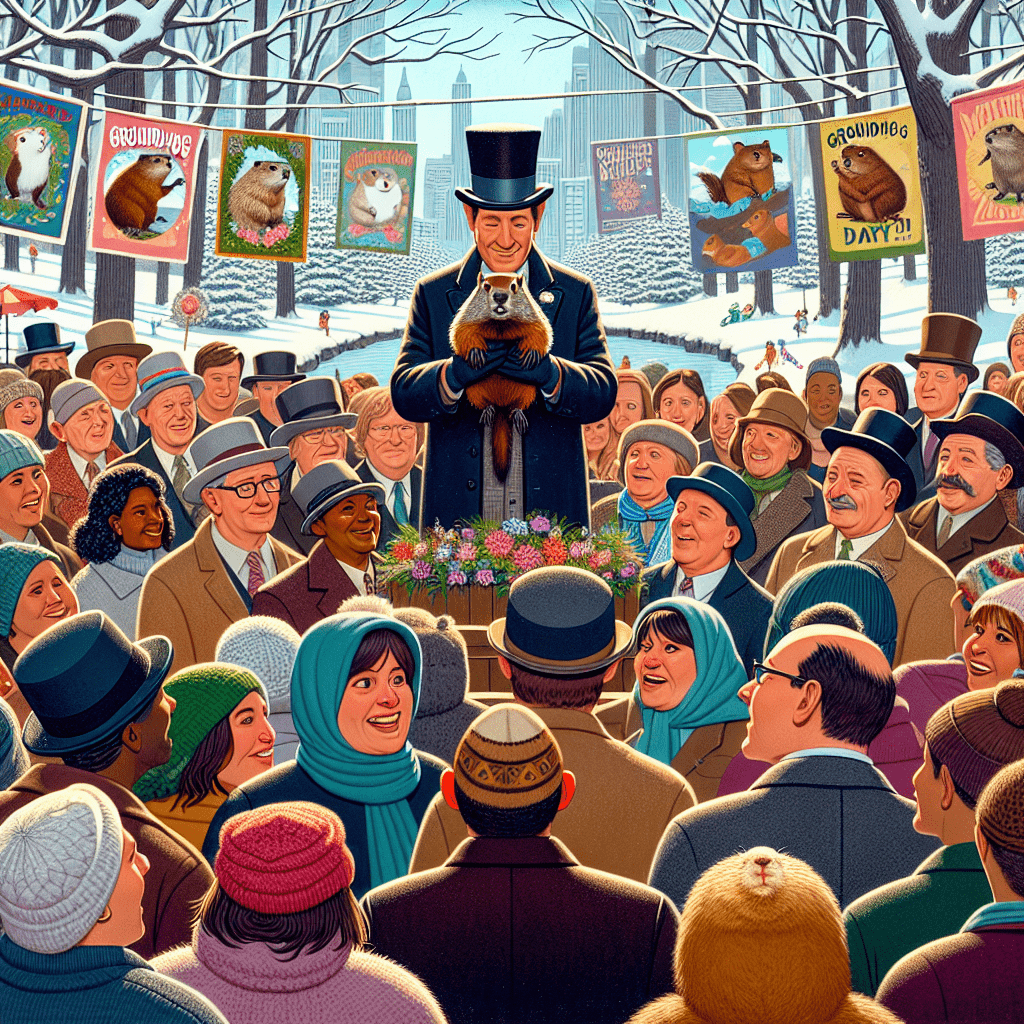## The History and Tradition of Groundhog Day: An In-depth Exploration
Groundhog Day is a popular North American tradition celebrated on the 2nd of February each year. The day revolves around the folklore that a groundhog, emerging from its burrow, can predict the coming weather by observing its shadow. According to lore, if the groundhog sees its shadow due to clear weather, it will retreat into its den, signifying six more weeks of winter; if it doesn’t see its shadow because of cloudiness, spring will arrive early. This article delves into the origins, cultural significance, and current celebration of Groundhog Day, as well as looking at other weather-predicting customs around the world.
Origins of Groundhog Day
The Groundhog Day tradition stems from Candlemas Day, which was brought to the United States by German immigrants in Pennsylvania in the 18th and 19th centuries. Candlemas is a Christian holiday commemorating the presentation of Jesus at the Temple. The Germans had previously used a hedgehog to predict the weather in a similar manner back in Europe. However, upon settling in America and finding no hedgehogs, they adapted the tradition to use the native groundhog.
Cultural Significance of Groundhog Day
While it may seem quaint, the folklore surrounding Groundhog Day provides a touchstone for American cultural identity, especially in small-town America. The largest Groundhog Day celebration is held annually in Punxsutawney, Pennsylvania, where “Punxsutawney Phil,” the most famous groundhog prognosticator, resides. The event attracts thousands of visitors and is marked by festivities that have become part of America’s cultural lexicon.
Scientific Accuracy and Criticism
Despite its popularity and charm, it’s widely recognized that a groundhog’s prediction holds no scientific merit when it comes to determining meteorological patterns. Critics often state that the whimsical nature and speculative predictions provide entertainment rather than factual climatological forecasting. Even so, the event continues to draw media attention and public participation every year.
Global Weather-Predicting Traditions
Variations of weather predicting customs based on animal behavior exist worldwide. Many cultures have long observed animal behavior and seasonal changes as a means to forecast upcoming weather patterns. These customs underscore a universal human desire to understand and predict environmental conditions.
Groundhog Day Celebrations Today
Modern Groundhog Day celebrations range from simple observances led by local dignitaries to elaborate festivals featuring music, food, and entertainment. Various towns across North America now have their own groundhog mascots and ceremonies. The day has expanded into a broader recognition of wildlife conservation and environmental education, with some organizations using Groundhog Day to raise awareness about these issues.
Comparison With Modern Meteorology
With advancements in science and technology, today’s meteorologists use sophisticated tools and data models for weather forecasting, which offer a much more reliable prediction compared to folklore methods. This section contrasts how modern meteorology stands in stark contrast to Groundhog Day predictions while acknowledging the cultural significance and the importance of customs in society.
Notes
Image Description: A crowd surrounded by snow-covered trees watches eagerly as a man in a top hat holds up “Punxsutawney Phil,” the famed groundhog known for predicting the weather on Groundhog Day. Behind them, decorative banners read “Groundhog Day” with illustrations of cartoonish groundhogs wearing top hats astride winter and spring-themed decorations.
